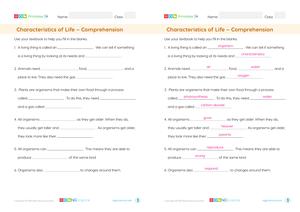Engage students with a brief discussion on the importance of bacteria in everyday life, both beneficial and harmful. Highlight their presence in food production and health.
Go to the LessonLearning Objectives
- Understand the basic characteristics of bacteria as unicellular organisms with simple cell structures.
- Identify the different ways bacteria obtain food, including decomposition, parasitism, and photosynthesis.
- Explain the rapid reproduction process of bacteria through cell division.
- Recognize both the harmful and beneficial roles of bacteria in various environments, including their role in human health and food production.
- Identify examples of bacteria that cause diseases as well as those that contribute to food production.
Introduction and Hook
Direct Instruction
Introduce the basic characteristics of bacteria as unicellular organisms with simple cell structures. Discuss their methods of obtaining food and rapid reproduction.
Guided Exploration
Explore the different roles of bacteria in ecosystems, emphasizing both their harmful and beneficial impacts.
Hands-On Activity
Conduct a simple experiment to observe bacteria growth using yogurt or cheese to demonstrate the role of bacteria in food production.
Independent Practice
Have students research and present on a specific type of bacteria, focusing on its characteristics, reproduction, and role in the environment.
Check for Understanding
Review and Reflection
Facilitate a class discussion on the diverse roles of bacteria, encouraging students to reflect on their importance in both natural and human-made environments.
Assessment and Extension
Assign the 'Characteristics of Life – Comprehension' assessment to reinforce knowledge about life processes and the needs of bacteria.
Encourage students to take the unit quiz to test their comprehension of the topic.
Try the Quiz



